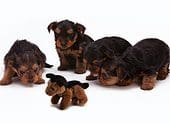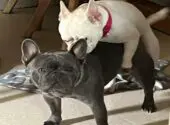One of the best things about owning a Schnoodle is not knowing what they will do next. They could be friendly and loyal, or they could be clingy and loving. Either way, their quirks make them unique.
There is also no denying that these merry dogs definitely look like plush toys! Their teddy bear appearance brings delight to people who see them for the first time.
If you’re thinking of buying or adopting one, read this guide first. We’ll tell you everything you need to know about how to keep your Schnoodle happy and healthy.
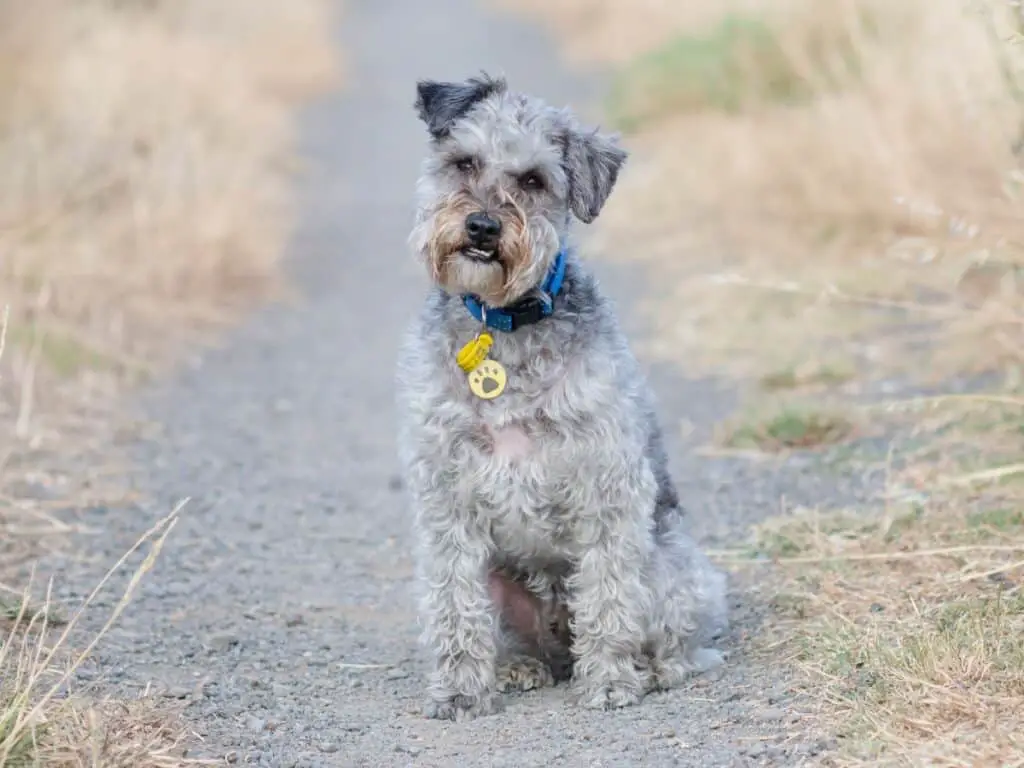
Quick Facts: Schnoodle
Height
10 - 25 inchesWeight
7 - 80 poundsLifespan
10 - 15 yearsBreed Size
small (0-25 lbs.), medium (26-60 lbs.), large (61-100 lbs.), extra large (more than 100 lbs.)Breed Type
hybridBreed Group
companionTemperament
friendly, protective, loyal, agreeable, people-friendly, activeGood With
families, other dogs, cats, strangersIntelligence
highShedding
infrequentExercise Needs
highBarking Level
highEnergy level
highDrool Amount
lowCoat Type
loose-wavy, curlyCoat Patterns
bi-color, single colorColors
black, gold/yellow, red, parti, red and white, champagne, copperOther Characteristics
apartment-friendly, easy to groom, easy to train, good hiking companion, hypoallergenic, prone to health issues, strong loyalty tendenciesSchnoodle Highlights
- The Schnoodle is one of the most popular crossbreed puppies today. It is a combination of a Schnauzer and a Poodle.
- Schnoodles are brilliant dogs who need mental and emotional stimulation. If they aren’t mentally and emotionally stimulated, they can become destructive and difficult to manage.
- Schnoodle puppies grow up to be fiercely loyal family pets who protect their owners with their lives.
- Apartments are suitable for small Schnoodles, but large Schnoodles need space to run around.
- Schnoodle dogs are low shedders and, therefore, suitable for people who suffer from allergies.
- Schnoodles need about 60 to 90 minutes of exercise each day.
- Schnoodles are very loving dogs who require lots of attention and care. However, once you learn how to take care of them properly, they will reward you by giving back just as much affection.
Let’s explore the rich and impressive history behind the Schnoodle.
History
This cross between the Schnauzer and the smaller version of the Poodle breed was created in the 1980s, but it has become more popular in recent decades, especially as people seek out designer breeds that are a perfect fit for a family’s new pet. The Schnoodle is considered to be the ideal family companion, able to get along well with other pets and people.
Knowing a few things about the Schnoodle’s parents can help you understand why this crossbreed is so unique.
Schnauzer
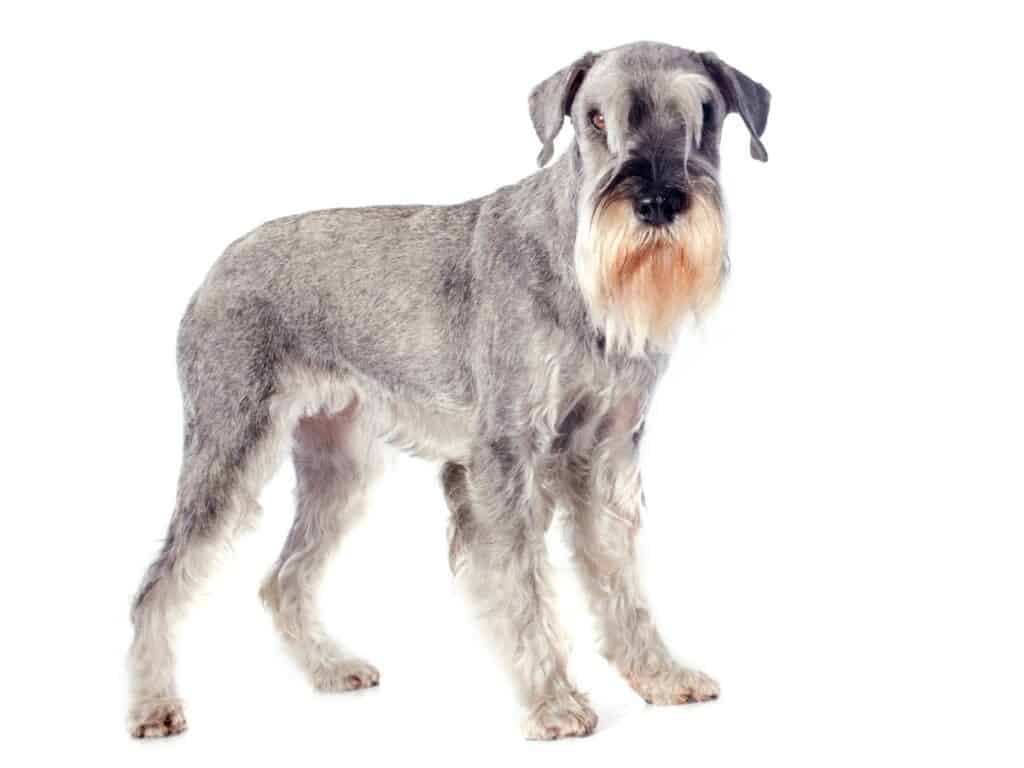
Schnauzers are known for their intelligence, loyalty, and devotion to their owners. They are also unique in appearance, especially when compared to other breeds. In Germany, these dogs are used primarily as guard dogs and companions. Their loyalty, courage, and intelligence make them ideal for this role.
They are vigilant, brave, and easy to train.
Schnauzers also make good farm dogs. These dogs are medium-sized but strong and durable. They’re bred to endure the harsh conditions of the German countryside and herd cattle over long distances.
They’re often mischievous and clever. They’re quick learners and people pleasers, making them ideal therapy dogs. When socialized with kids, they become an excellent and loving companion for the younger members of the household.
Poodle
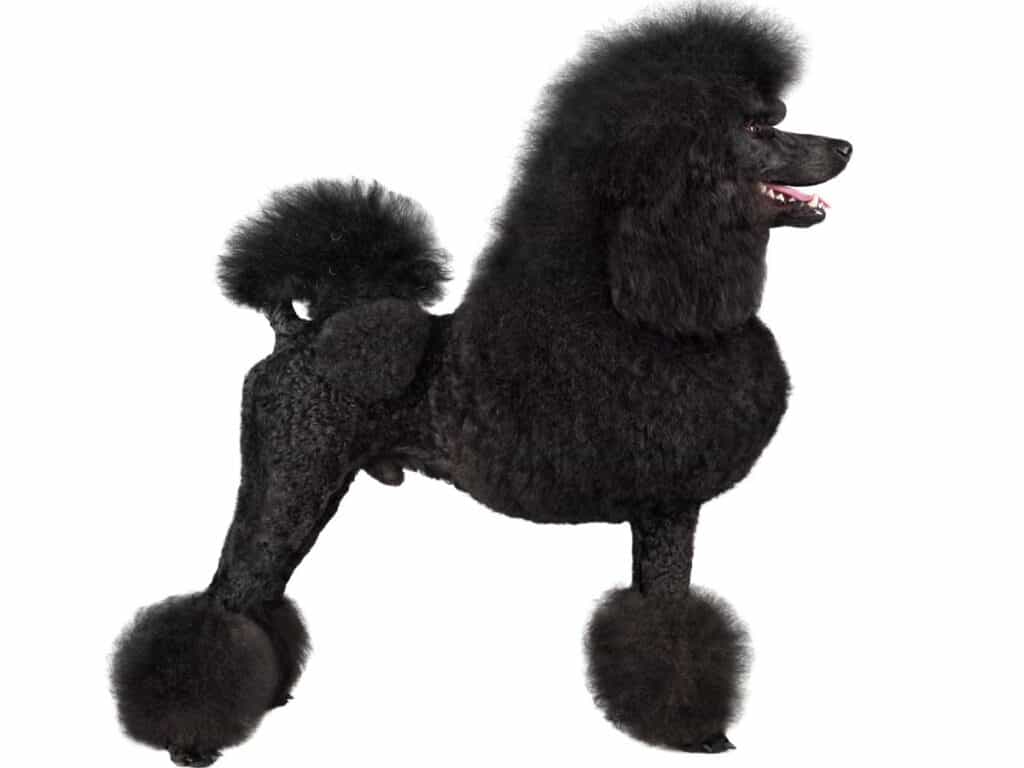
Poodles’ original purpose was to be a swimming companions for their owners. Even their famous haircuts aren’t a fashion statement; they’re actually helpful because they help keep poodles warm when swimming.
Although they appear delicate and demure, they’re high-energy dogs with impressive skills, from agility to obedience, hunting, and herding. Poodles can be competitive athletes in addition to stunning companions.
Appearance
When it comes to how Schnoodles look like, the first thing that comes to mind is a “teddy bear-like appearance”.
A Schnoodle usually has a lean body and an energetic personality, making them perfect for running and other activities. Sometimes, however, there is a mini variation that looks like the Miniature Poodle; these are still adorable.
The almond-shaped eyes are usually either hazel or brown, but you may be unable to resist the eyes of a puppy Schnoodle because of their long eyelashes.
The Schnoodle’s ear shape varies greatly. Some will have the floppy, folded ear of the Miniature Poodles; others may have the upright, erect ear of the Schnauzer. And, just like Labrador mixes, they can have their own unique combination of both.
Additionally, their legs are fairly fine-boned, making them appear longer than they actually are.
Schnoodle Size
Schnoodles come in four sizes: toy Schnoodle, miniature Schnoodle, standard Schnoodle, and giant Schnoodle.
Toy Schnoodle: 10 to 12 inches in height and 7 to 15 pounds in weight.
Miniature Schnoodle: 12 to 14 inches tall and weighs 15 to 30 pounds.
Standard Schnoodle: 18 to 22 inches in height and 30 to 50 pounds in weight.
Giant Schnoodle: 20 to 25 inches tall and weighs 50 to 80 pounds.
Schnoodle Colors
A Schnoodle’s coat can come in any number of different colours, including parti, red and white, red, apricot, golden, champagne, ultra cream, copper, and black. The most common colors are champagne and ultra cream. Light highlights may appear on the feathers, and the coat usually gets lighter with time.
You won’t be able to tell the exact coat color of your Schnoodle puppy when it’s young because each breed has its own characteristics. So do not expect your puppy to look exactly like every other puppy out there.
Schnoodle Coat
The most common coat is loose-wavy, which is usually low to moderate shedder in F1, F2, and F2B breedings. This coat can be produced in all Schnoodles and is easy to maintain; however, it requires daily brushings in certain areas (such as behind the ear, under the neck, at the base of the tail and beneath the legs).
And then there are Schnoodle with curly coats. This type of coat can either be a loose barrel curl or a tight kinky curl. F1, F2, and F3 curly-coated Schnoodles are less likely to shed than their loose-wavy-coated counterparts.
But take note: As Schnoodle puppies mature, their coats will change. Some will get longer, and some will become fuller.
Curly coated Schnoodles don’t show any signs of “crimp” or curling on their heads, ears or backs at birth. However, loose-wavy-coated Schnoodles can be easily identified because they begin to crimp or form curls on their heads, ears, or backs when they’re born.
Personality
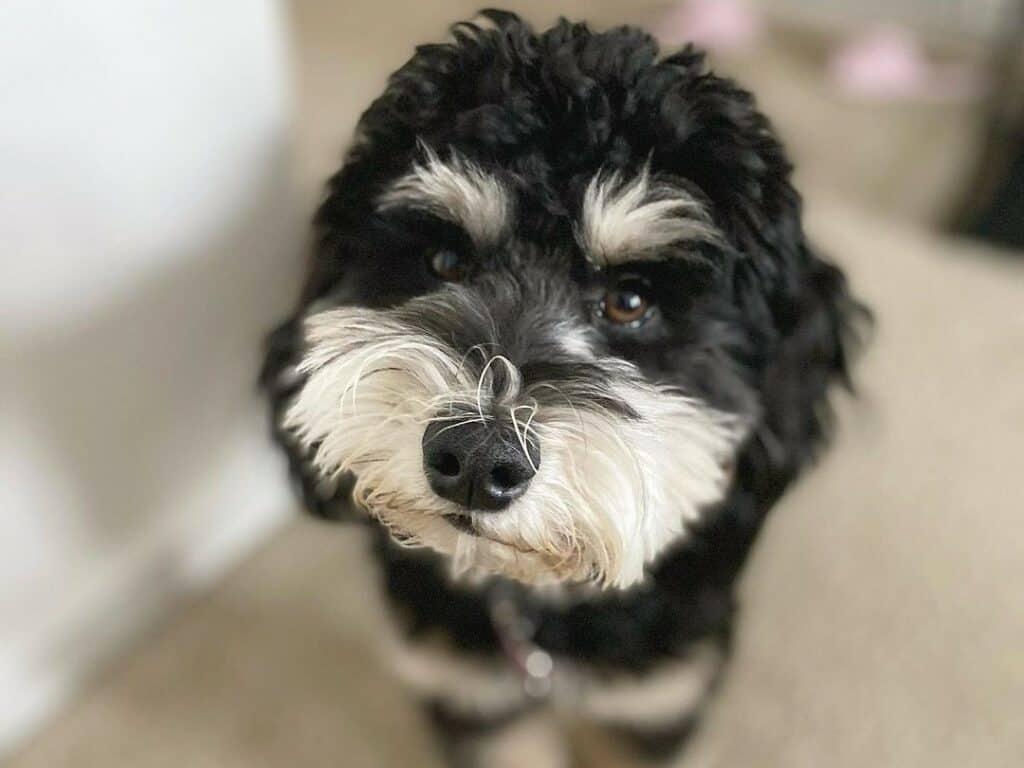
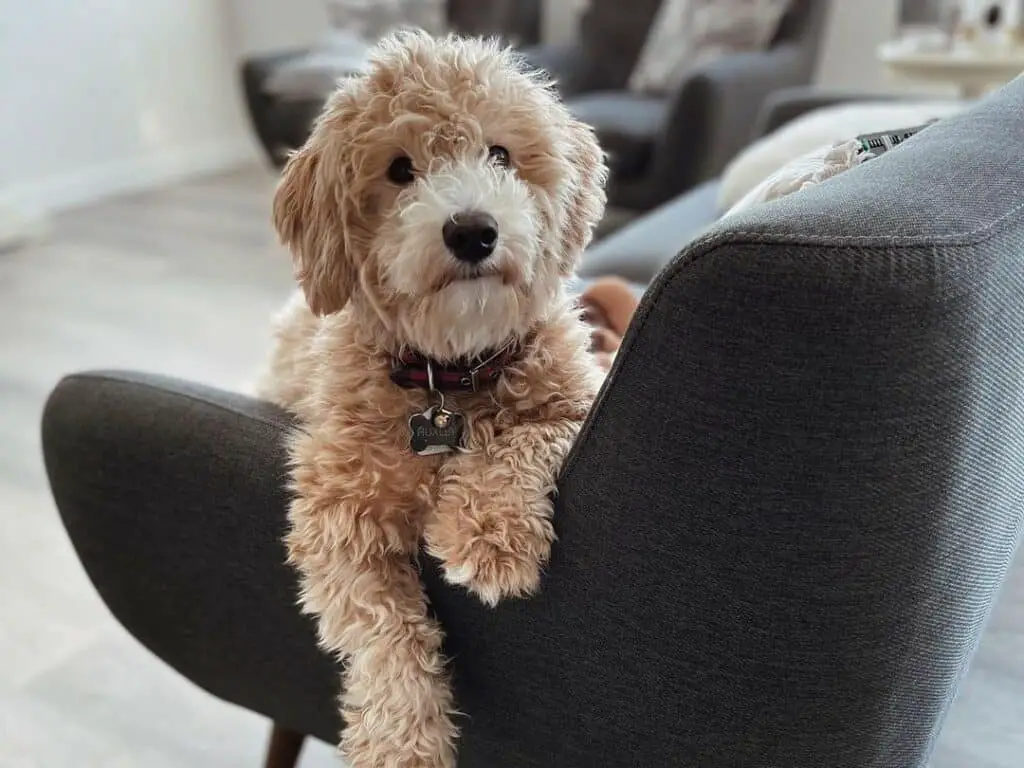
The Schnoodle is a mix of the playful Schnauzer and the intelligent Poodle dog. They’re known for their friendly personalities and for making friends with everyone they meet. Expect them to be smiling from ear to ear when they come into your home!
This dog is very energetic and has a playful personality. If you’re hosting a party for some friends, your Schnoodle will probably try its hardest to steal the show.
When outside, they quickly make friends, but they are also good guards in the house. This trait can be attributed to their Schnauzer parent breed. However, they can also be destructive if not properly trained. To prevent this behavior, keep your Schnoodle busy with activities such as puzzle games and toys that cannot be destroyed. Also, ensure that your Schnoodle does not get lonely and bored.
Genetics plays a role in your Schnoodle’s temperament. However, genes aren’t the only thing determining how a puppy behaves. Training, nurturing, and socialization are also very important factors. Start training them as soon as possible to learn what is expected of them. They will grow up to be the best companions you could ever wish for.
Health
These dogs are generally healthy, but owners should know that this breed may develop some of the following health issues:
Skin problems: Typical skin problems that can appear in Schnoodles include sensitive skin, skin allergies, dry and oily seborrhea, and Schnauzer Comedo Syndrome.
Schnoodles may inherit the parent breed’s Schnauzer Comedo Syndrome. This refers to a condition where small bumps appear on the dog’s skin. These bumps are similar to warts, but any kind of virus does not cause them. They usually occur on the back of the animal and are often mistaken for acne. They don’t cause any harm to the dog and aren’t contagious.
Epilepsy: Epilepsy is an inherited neurological condition that some dogs may be genetically predisposed to develop. As of now, there is no known cure for epilepsy, but treatment options are available.
Epilepsy is when an animal has recurrent seizure episodes. Seizure episodes usually aren’t too severe, but they’re frightening to watch. If you notice anything unusual happening with your dogs, take them to the vet right away.
Diabetes Mellitus: Diabetes Mellitus is a condition that affects your dogs’ blood sugar levels. It happens when your pet’s body doesn’t produce enough insulin, doesn’t normally respond to insulin, or both.
It can lead to serious health issues if not properly managed. Blood sugar levels must be carefully monitored to prevent long-term damage.
Canine Hyperlipidemia: Hyperlipidemia usually occurs as a result of another disorder, such as diabetes mellitus. However, they may also develop it spontaneously after eating table food. Your vet might recommend an alternative treatment for your dog if it has this problem.
Lifespan
On average, Schnoodles typically live from 10 to 15 years. Larger Schnoodles tend to live longer than smaller ones.
Care
All four sizes of Schnoodles don’t drool much at all. However, if your Schnoodle is drooling excessively, it could be a sign of a health problem, so take your dog to a vet for an examination.
To keep your Schnoodle’s mouth clean, brush them twice or thrice a day. Brushing daily is even better if you wish to prevent gum diseases and stinky breath!
If your Schnoodle has long nails, trim them, so they don’t scratch your floors. Keep them short and neat if you want to avoid getting scratched when your Schnoodle greets you by jumping up to give you a hug.
And because this breed has a lot of energy to burn off daily, a 60-minute walk daily session is required. For standard and larger-sized Schnoodles, these sessions should last approximately 90 minutes per session. Consider including additional activities such as running, hiking, and frisbee into the dog’s routine.
As well as being active, Schnoodles are also intelligent. That’s why this breed must get mental exercise too! You can take walks together, set up obstacle courses, or even play interactive games.
Diet
Regardless of their size, Schnoodles will require foods that contain adequate nutrients, vitamins, carbohydrates, and protein for optimal health. Most people choose premium dry dog foods because they’re easy to prepare and offer complete nutrition.
Grooming
In terms of grooming, Schnoodles don’t require much care.
A Schnoodle can either have a loose-wavy or curly coat. Schnoodles shed very little hair, whether wavy or curly, so little maintenance is needed. They’re considered hypoallergenic, so they’re good for people who suffer from allergies.
Children And Other Pets
Schnoodles are an adorable breed of dog that loves playing with kids. They can also be trained to do tricks and are great around little ones. They’re also very social dogs who can adapt to living with any type of household. However, all puppies should be introduced to children to learn how to interact with them. A six-year-old Schnoodle can easily adjust to a child’s lifestyle, but a Schnoodle puppy needs to be socialized with children to feel comfortable around them.
Remember: You should always teach kids how to interact safely and supervise their interactions with Schnoodles to avoid any bites, ear, or tail pulls from either side. Teach your child not to approach Schnoodles when they’re feeding or resting, or trying to steal their food. No dog, regardless of how friendly, should ever go without supervision with a young child.
In addition, Schnoodles usually get along well with other dogs, but they’re not always the best at playing together. They don’t always share toys easily.
Rescue Groups
When searching for Schnoodle rescue groups, you will typically find an animal shelter that takes both parent breeds. In order to assist you, we’ve compiled a list of the Schnauzer and Poodle shelters that can assist you. These groups work hard to make sure they provide the best medical treatment possible for dogs before releasing them into loving families.
Schnauzer Rescue of the Mid-Atlantic
Maple Creek Miniature Schnauzer Rescue
New Jersey Schnauzer Rescue Network
Schnoodle FAQs
Is a Schnoodle a good family dog?
es. Schnoodles are generally good family dogs. They are gentle with kids and accepting of other pets in the house.
Do Schnoodles live long?
Yes. Schnoodles can live between 10-15 years, although many factors can affect their lifespan.
Are Schnoodles high maintenance?
No. Schnoodles don’t shed a lot and require minimal grooming every 6-8 weeks.
Is a Schnoodle hypoallergenic?
Yes. Besides shedding less frequently than other breeds, Schnoodles are hypoallergenic, making them suitable for people with allergies.
Are Schnoodles well-behaved?
No. The temperament of Schnoodles is often described as active and smart. They may jump on people whenever they are excited and happy.
Schnoodle Fun Facts
- Schnoodles look like teddy bears because they have a furry coat resembling that of a teddy.
- A Schnoodle’s sense of smell is much keener than humans’ – so if you’ve got one of these little guys around, they’ll definitely know where the treats are hidden!
- Schnoodles shouldn’t be kept outside or in kennels because they can get anxious when left alone for too long.
- They are usually playful and energetic when they’re younger but tend to get less active as they age. They can be quite relaxed at three to four years old.
- They’re extremely protective of their families and can be quite vocal when protecting them.
References
Bensignor, E., & Dip, E. C. V. D. Seborrhea.Hannigan, M. M. (1997). A refractory case of schnauzer comedo syndrome. The Canadian Veterinary Journal, 38(4), 238.
Ekenstedt, K. J., & Oberbauer, A. M. (2013). Inherited epilepsy in dogs. Topics in Companion Animal Medicine, 28(2), 51-58.
Mattheeuws, D., Rottiers, R., Kaneko, J. J., & Vermeulen, A. (1984). Diabetes mellitus in dogs: relationship of obesity to glucose tolerance and insulin response. American Journal of Veterinary Research, 45(1), 98-103.


